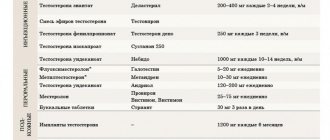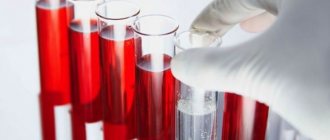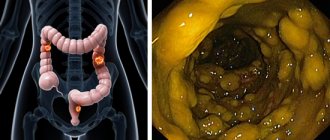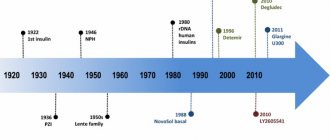Pharmacological properties of the drug Exifin tablets
A synthetic antifungal drug from the group of allylamines with a wide spectrum of antifungal action. In low concentrations it has fungicidal activity against dermatophytes, molds and some dimorphic fibes. The effect on yeast fibes can be fungicidal or fungistatic depending on the type of fibe. The drug inhibits the biosynthesis of sterols in the fungal cell, which leads to ergosterol deficiency, accumulation of squalene inside the cell and its death. Exifin does not affect the metabolism of hormones or other drugs. Exifin is effective against pathogens of dermatomycosis (Trichophyton spp., Microsporum canis and Epidermophyton floccosum), yeast-like fibs of the genus Candida. Unlike topical application, its oral administration is ineffective against Pytiriasis versicolor. When administered orally, the drug accumulates in the skin and nails in a fungicidal concentration. 2 hours after taking 250 mg of terbinafine, its maximum concentration in blood plasma is reached, which is 0.97 mcg/ml; simultaneous food intake does not affect its bioavailability. Terbinafine is almost completely bound to plasma proteins (99%). It quickly diffuses through the dermis and accumulates in the lipophilic stratum corneum of the epidermis. Excreted with the secretion of the sebaceous glands. High concentrations are created in hair follicles, hair, oily skin and in the nail plate. Biotransformation in the liver leads to the formation of metabolites that do not have antifungal activity and are excreted from the body mainly in the urine. The half-life is 17 hours. It does not accumulate in the body. No changes in pharmacokinetics were noted depending on the patient’s age, however, in patients with impaired renal or liver function, the rate of drug excretion from the body may be reduced, resulting in a higher concentration of terbinafine in the blood plasma.
Exifine®
Exifin® is generally well tolerated. Side effects are usually mild or moderate and transient. The following are adverse events that were observed during clinical trials or during the post-marketing period.
When assessing the frequency of side effects, the following gradations were used: “very often” (≥1/10), “common” (≥1/100 - <1/10), “infrequently” (≥1/1000 - <1/100) , “rare” (≥1/10000 - <1/1000), “very rare” (<1/10000), including isolated reports.
Blood and lymphatic system disorders
Uncommon: anemia; very rarely - neutropenia, agranulocytosis, pancytopenia, thrombocytopenia.
Immune system disorders
Very rarely - anaphylactoid reactions (including angioedema), cutaneous and systemic lupus erythematosus (or their exacerbation).
Mental disorders
Often - depression; infrequently - anxiety.
Nervous system disorders
Very often - headache; often - dizziness, disturbances in taste, up to their loss (usually recovery occurs within a few weeks after stopping treatment). There are isolated reports of cases of long-term disturbances in taste. In some cases, while taking the drug, exhaustion was noted. Uncommon: paresthesia, hypoesthesia.
Visual disorders
Uncommon: visual impairment.
Hearing and labyrinth disorders
Uncommon: tinnitus.
Disorders of the liver and biliary tract
Rare: hepatobiliary dysfunction (mainly cholestatic in nature), including liver failure, including very rare cases of severe liver failure (some fatal or requiring liver transplantation; in most cases where liver failure developed, patients had serious concomitant systemic diseases and the cause-and-effect relationship of liver failure with taking terbinafine was questionable), hepatitis, jaundice, cholestasis, increased activity of liver enzymes.
Digestive system disorders
Very often - bloating, loss of appetite, dyspepsia, nausea, mild abdominal pain, diarrhea.
Skin and subcutaneous tissue disorders
Very often - rash, urticaria; uncommon - photosensitivity reactions; very rarely - Stevens-Johnson syndrome, toxic epidermal necrolysis, acute generalized exanthematous pustulosis, erythema multiforme, toxic skin rash, exfoliative dermatitis, bullous dermatitis, psoriasis-like skin rashes or exacerbations of psoriasis, alopecia.
Musculoskeletal and connective tissue disorders
Very often - arthralgia, myalgia.
Generally not a disorder
Often - feeling tired; infrequently - increased body temperature.
Laboratory and instrumental data
Uncommon: weight loss (secondary to taste disturbances).
Based on spontaneous reports received during the post-registration period and literature data, the following adverse events were identified, the frequency of which, due to the inaccurate number of patients, cannot be established. Immune system disorders: anaphylactic reactions, serum sickness-like syndrome.
Visual disturbances: blurred vision, decreased visual acuity.
Skin and subcutaneous tissue disorders: drug rash with eosinophilia and systemic symptoms (rash, swelling, fever and swollen lymph nodes).
Hearing and labyrinthine disorders: hearing loss, hearing impairment.
Vascular disorders: vasculitis.
Nervous system disorders: loss of smell, including for a long period of time, decreased sense of smell.
Digestive system disorders: pancreatitis.
Musculoskeletal and connective tissue disorders: rhabdomyolysis.
General disorders: influenza-like syndrome.
Laboratory and instrumental data: increased activity of creatine phosphokinase in the blood serum.
If any of the side effects indicated in the instructions get worse, or you notice any other side effects not listed in the instructions, tell your doctor.
Use of the drug Exifin tablets
For adults, Exifin is prescribed orally 250 mg once a day; children weighing ≤20 kg - 62.2 mg/day, 20-40 kg - 125 mg/day, 40 kg - 250 mg/day. There are no data on the use of the drug in children under 2 years of age (body weight ≤12 kg). The duration of treatment depends on the severity of the infection and the type of pathogen. Thus, for interdigital mycosis and lesions of the soles, the duration of treatment is 2–6 weeks, for shingles mycosis and cutaneous candidiasis - 24 weeks. Complete disappearance of the symptoms of the disease occurs after a few weeks. For onychomycosis, the duration of treatment in most cases ranges from 6 weeks to 3 months. If nail growth is slow, a longer course of treatment may be needed. If after 2 weeks there are no signs of improvement, microbiological verification of the diagnosis is necessary.
Indications for use
Exifin cream is used for the prevention and treatment of fungal diseases of the skin:
- pityriasis versicolor;
- trichophytosis , rubrophytosis , microsporia , which are caused by sensitive pathogens;
- yeast infections.
Tablets are indicated for:
- onychomycosis;
- mycoses of the scalp;
- candidiasis of the skin and mucous membranes;
- mycoses of the skin and nails caused by Trychophyton, Epidermophylom floccosum and Microsporum;
- severe dermatomycosis of smooth skin of the extremities and torso, which require systemic therapy.
Special instructions for the use of the drug Exifin tablets
patients with severe renal and/or liver failure should be prescribed the drug in lower doses. When prescribing the drug to elderly patients, the possibility of having impaired liver or kidney function should be taken into account. Experimental studies have not revealed the embryotoxic effect of terbinafine, but clinical experience with the drug in pregnant women is insufficient. It is not recommended to use the drug during pregnancy, especially in the first trimester, in the absence of absolute indications for its use. Exifin passes into breast milk, so breastfeeding should be stopped during treatment.
Overdose
When taking tablets in higher dosages, nausea, headache, dizziness , pain in the lower abdomen, in the epigastric region, and vomiting . As treatment, the patient is prescribed gastric lavage and subsequent administration of Activated Carbon . Therapy is symptomatic.
There are no reports of an overdose of Exifin cream. If the drug is accidentally ingested, the same negative reactions may develop as in the case of an overdose of tablets.
Exifina price, where to buy
The price of Exifin depends on the form of release. Tablets are quite expensive, so many people prefer to look for a replacement. Terbinafine-Teva is often recommended in pharmacies as a cheaper drug with a similar effect . The price of Exifin tablets (16 pieces per package) is about 700 rubles.
The cream is much cheaper. So the price of Exifin ointment in most pharmacies is about 180 rubles.
- Online pharmacies in RussiaRussia
- Online pharmacies in KazakhstanKazakhstan
ZdravCity
- Exifin cream 1% 10gDr.
Reddy's lab. RUB 219 order - Exifin tablets 250 mg 16 pcs. Dr. Reddy's lab.
RUB 823 order
Pharmacy Dialogue
- Exifin cream (tube 1% 10g)Dr. Reddy's
RUB 203 order
- Exifin tablets 250 mg No. 16Dr. Reddy's
RUB 805 order
show more
Reviews about Exifina
Reviews about Exifina are usually positive. Those who have used this remedy characterize the ointment and tablets as an effective fast-acting drug.
Side effects are rarely reported. Only a few reviews of Exifina in the form of an ointment talk about a burning sensation at the beginning of use, which goes away on its own and does not require discontinuation of the drug. Among the positive aspects, patients also note that the cream does not leave stains on clothes and has a very pleasant smell.
Reviews of Exifin tablets report that they are often used as a cheaper analogue of the expensive Lamisil .
Analogs
Level 4 ATX code matches:
Mikonorm
Undecin
Gentian violet
Zinkundan
Exoderil
Exiter
Batrafen
Lotseril
Lamisil Dermgel
Lamisil Uno
Lamisil
Salicylic acid
Salicylic ointment
Keto Plus
Fungoterbin
Mycoseptin
Thermikon
Nitrofungin
Sulsena
Baziron AS
In pharmacies you can find the following analogues of Exifin tablets with the same release form:
- Terbinafine-Sar;
- Lamisil;
- Terbinox;
- Terbizil;
- Medofloran;
- Onyhon;
- Tsidokan;
- Binafin;
- Lamican;
- Terbifin;
- Thermikon;
- Fungoterbin;
- Atifin;
- Terbinafine Hexal;
- Exiter;
- Terbinafine-Teva;
- Tigal-Sanovel;
- Terbinafine Pfizer;
- Terbinafine;
- Terbinafine-MFF;
- Tebicourt.
The cream has the following analogues, similar in action and release form:
- Terbinox;
- Terbizil;
- Fungoterbin;
- Binafin;
- Mikonorm;
- Thermikon;
- Atifin;
- Terbinafine;
- Turbix;
- Terbifin;
- Lamisil;
- Terbized-Agio;
- Ungusan;
- Tebicourt.
Interaction
The medicine blocks CYP206 and biotransformation in the body of tricyclic antidepressants , as well as beta-blockers , selective serotonin uptake blockers , MAO type B inhibitors , antiarrhythmic and antisychotic drugs.
Inducers of CYP450 enzymes can lead to accelerated elimination of the active substance Exifin. Inhibitors of these enzymes , on the contrary, can slow down the biotransformation and excretion of terbinafine . This combination may require dosage adjustment.
Terbinafine taken with oral contraceptives may cause menstrual .
When combined with ethanol and hepatotoxic drugs, the likelihood of a hepatotoxic effect increases. Exifine also reduces the clearance of caffeine and increases its half-life.







![Table 1. Dynamics of publications on clinical trials of piracetam and piracetam-like drugs over four time periods [5, with additions]](https://laram-halal.ru/wp-content/uploads/tablica-1-dinamika-publikacij-posvyashchennyh-klinicheskim-ispytaniyam-piracetama-i-piracetamopodobnyh-330x140.jpg)